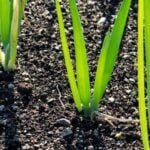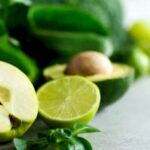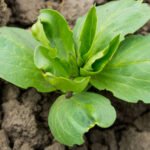Is 10-10-10 fertilizer for vegetable gardens beneficial? When it comes to the health and yield of your vegetable garden, understanding the 10-10-10 ratio of fertilizer is crucial. This article will explore the significance of using 10-10-10 fertilizer for vegetable gardens, as well as provide insights into its benefits, proper application, common mistakes to avoid, and the best vegetables to use it on.
The 10-10-10 ratio refers to the percentage of nitrogen, phosphorus, and potassium present in the fertilizer. These three nutrients are essential for the growth and development of vegetable plants. Nitrogen promotes leafy green growth, phosphorus supports root development and flowering, while potassium helps with overall plant health and disease resistance. Understanding this ratio is important because it determines how well-balanced the fertilizer is for your vegetable garden’s specific needs.
Using 10-10-10 fertilizer can offer numerous benefits for your vegetable crops. It can enhance overall plant growth, improve root development, promote healthy fruit production, and increase resistance to diseases and pests. In the following sections, we will delve deeper into these advantages and provide a step-by-step guide on how to properly apply 10-10-10 fertilizer to your vegetable garden.
Benefits of Using 10-10-10 Fertilizer for Vegetable Gardens
The use of 10-10-10 fertilizer in vegetable gardens offers several benefits that contribute to the healthy growth and development of crops. The balanced ratio of nutrients in 10-10-10 fertilizer provides essential elements that are crucial for the overall health and productivity of vegetable plants. Here are some advantages of using 10-10-10 fertilizer for vegetable gardens:
- Balanced Nutrition: The 10-10-10 ratio represents equal parts of nitrogen, phosphorus, and potassium, which are essential nutrients for plant growth. This balanced nutrition promotes strong root development, robust foliage, and improved fruit production in vegetable crops.
- Versatility: 10-10-10 fertilizer is suitable for a wide variety of vegetables, making it a versatile choice for gardeners with diverse crops. Whether you’re growing tomatoes, peppers, cucumbers, or leafy greens, this type of fertilizer can fulfill the nutritional needs of various vegetable plants.
- Convenient Application: Using a pre-mixed 10-10-10 fertilizer saves time and effort compared to blending individual nutrients separately. It simplifies the fertilization process for gardeners and ensures that plants receive a consistent supply of essential nutrients throughout their growth stages.
In addition to these benefits, the balanced formulation of 10-10-10 fertilizer makes it suitable for both new plantings and established vegetable gardens. Its ability to promote overall plant health and increase resistance to diseases and pests further underscores its value in supporting the successful cultivation of vegetables.
Ensuring proper nutrition is vital when cultivating a thriving vegetable garden, and the use of 10-10-10 fertilizer provides an efficient way to meet the nutritional requirements of a wide range of vegetable crops. By understanding its advantages and incorporating it into your gardening routine, you can optimize the growth and yield potential of your favorite vegetables.
How to Use 10-10-10 Fertilizer
When using 10-10-10 fertilizer in your vegetable garden, it’s important to apply it correctly to ensure the best results for your crops. Here is a step-by-step guide on how to properly apply 10-10-10 fertilizer to your vegetable garden:
Determine the Right Time
Before applying 10-10-10 fertilizer, it’s crucial to determine the right time for application. Typically, you’ll want to fertilize your vegetable garden when the soil is moist, and the plants are actively growing. Avoid fertilizing during extreme heat or drought conditions, as this can cause stress to your plants.
Measure and Calculate
The next step is to measure and calculate the amount of 10-10-10 fertilizer needed for your vegetable garden. The general guideline is to use 1 pound of 10-10-10 fertilizer for every 100 square feet of garden area. It’s important not to over-fertilize, as this can harm your plants.
Application Method
Once you have determined the right time and calculated the amount needed, it’s time to apply the 10-10-10 fertilizer. You can either broadcast the granules evenly over the soil surface or carefully sprinkle them around the base of each plant, avoiding direct contact with the leaves.
Remember that it’s essential to water your vegetable garden thoroughly after applying 10-10-10 fertilizer to help activate and distribute the nutrients into the soil where they are needed by the plants. By following these steps, you can ensure that your vegetable garden receives the right amount of nutrients from 10-10-10 fertilizer without causing harm to your plants.
Common Mistakes to Avoid When Using 10-10-10 Fertilizer
Over-Application
One common mistake to avoid when using 10-10-10 fertilizer in vegetable gardens is over-application. While it may be tempting to apply more fertilizer in the hopes of getting better results, excessive use can lead to nutrient imbalances in the soil. This can negatively impact the growth and development of your vegetable crops.
Not Following Application Guidelines
Another mistake to watch out for is not following the recommended application guidelines for 10-10-10 fertilizer. Different vegetables have different nutrient requirements, and applying the fertilizer haphazardly without considering these specific needs can lead to inefficient nutrient absorption or even damage to the plants. It’s crucial to carefully read and follow the instructions provided by the manufacturer regarding how much fertilizer to use and when to apply it.
Applying During Hot Weather
It’s important to avoid applying 10-10-10 fertilizer during periods of hot weather. High temperatures can increase the risk of burning plant roots if the fertilizer is applied when conditions are too dry. It’s best to apply the fertilizer during cooler times of the day or when rain is expected, so that the nutrients can be properly absorbed without causing harm to the plants.
Best Vegetables to Use 10-10-10 Fertilizer On
When it comes to using 10-10-10 fertilizer for vegetable gardens, certain crops benefit more from this type of fertilizer than others. The balanced ratio of nitrogen (N), phosphorus (P), and potassium (K) in 10-10-10 fertilizer makes it suitable for a variety of vegetables. Here are some of the best vegetables to use 10-10-10 fertilizer on:
- Tomatoes: Tomatoes are heavy feeders and require a good amount of nutrients to produce healthy, flavorful fruits. The balanced nutrients in 10-10-10 fertilizer can help promote strong root development and improve fruit quality.
- Peppers: Like tomatoes, peppers also benefit from the balanced nutrient composition of 10-10-10 fertilizer. The phosphorus in the fertilizer can support better flower and fruit production, leading to higher yields.
- Squash: Whether it’s zucchini or butternut squash, these crops thrive with the help of 10-10-10 fertilizer. The balanced nutrients aid in overall plant growth and can contribute to a healthier harvest.
In addition to these vegetables, other crops such as cucumbers, beans, and leafy greens can also benefit from the use of 10-10-10 fertilizer due to its ability to provide essential nutrients for robust growth and bountiful harvests.
Overall, the balanced ratio of nitrogen, phosphorus, and potassium in 10-10-10 fertilizer makes it a versatile option for many vegetable crops. When used properly, this type of fertilizer can contribute to healthier plants, increased yields, and improved overall garden productivity.
Organic Alternatives to 10-10-10 Fertilizer
For those who prefer to utilize organic options for their vegetable gardens, there are several alternative fertilizers that can effectively promote healthy plant growth. One option is compost, which is a natural and organic fertilizer that adds essential nutrients to the soil. Compost also helps improve soil structure and water retention, making it an excellent choice for vegetable gardens.
Additionally, fish emulsion is another popular organic fertilizer that provides plants with a rich source of nutrients like nitrogen, phosphorus, and potassium. This type of fertilizer is derived from fish waste products and is considered an environmentally friendly option for organic gardeners.
Another organic alternative to 10-10-10 fertilizer is seaweed or kelp fertilizers. These natural fertilizers are derived from seaweed and contain a wide range of nutrients that are beneficial for vegetable crops. Seaweed fertilizers also help stimulate plant growth, enhance disease resistance, and improve overall plant health. These organic alternatives provide a safe and sustainable way to nourish your vegetable garden without the use of synthetic chemicals.
It’s important to note that when selecting organic alternatives to 10-10-10 fertilizer, it’s essential to consider the specific nutrient requirements of your vegetable crops. Different vegetables have varying needs when it comes to nutrients such as nitrogen, phosphorus, and potassium. By understanding the nutritional needs of your plants, you can choose the best organic fertilizer that will support their growth and development in your vegetable garden.
Potential Risks of Using 10-10-10 Fertilizer
While 10-10-10 fertilizer can be a convenient and effective way to provide essential nutrients to your vegetable garden, there are some potential risks and downsides to consider. One of the main concerns with using this type of fertilizer is the possibility of over-fertilization.
Since 10-10-10 contains equal parts nitrogen, phosphorus, and potassium, it can be easy to apply too much, leading to nutrient imbalances in the soil. This can result in excessive foliage growth at the expense of fruit production in certain vegetable plants.
Another risk associated with using 10-10-10 fertilizer is the potential for water contamination. When applied in excess or during heavy rainfall, the nutrients from the fertilizer can leach into groundwater or nearby bodies of water, leading to pollution and harmful algal blooms. Additionally, improper application of 10-10-10 fertilizer can lead to run-off into waterways, causing similar environmental issues.
Lastly, there is also a risk of chemical burns on plant roots if the 10-10-10 fertilizer is not properly diluted or incorporated into the soil. The high salt content in these synthetic fertilizers can damage delicate root systems if not applied correctly. Careful consideration and proper techniques should be employed when working with 10-10-10 fertilizer to avoid these potential risks and maintain a healthy vegetable garden.
| Potential Risks | Associated Issues |
|---|---|
| Over-fertilization | Nutrient imbalances, excessive foliage growth |
| Water Contamination | Leaching into groundwater, pollution |
| Chemical Burns on Plant Roots | Damaged root systems |
Tips for Choosing the Right 10-10-10 Fertilizer for Your Vegetable Garden
In conclusion, when it comes to choosing the right 10-10-10 fertilizer for your vegetable garden, there are several factors to consider. First and foremost, it is important to assess the specific needs of your vegetable crops.
Different vegetables have different requirements when it comes to nutrients, so understanding what your plants need is essential in selecting the best fertilizer. Additionally, consider the soil composition and pH levels in your garden, as this can also impact the effectiveness of the fertilizer.
Another important factor to consider when choosing a 10-10-10 fertilizer is the quality of the product. Look for a reputable brand known for producing high-quality fertilizers that are formulated specifically for vegetable gardens. Reading reviews and talking to other gardeners can also provide valuable insight into which brands are most effective.
Lastly, don’t overlook the importance of following the application instructions provided by the manufacturer. Properly applying 10-10-10 fertilizer according to guidelines will ensure that your vegetable crops receive the intended benefits without risk of over-fertilization, which can be harmful to plants and detrimental to overall garden health. By carefully considering these factors and taking a thoughtful approach to selecting and using 10-10-10 fertilizer, you can maximize the health and productivity of your vegetable garden.
Frequently Asked Questions
Is 10-10-10 Safe for Vegetables?
10-10-10 fertilizer can be safe for vegetables if used correctly. It is important to follow the instructions on the label and not overapply the fertilizer, as this can harm the plants. Additionally, some organic alternatives may be preferred by gardeners who want to avoid synthetic chemicals.
How Do I Apply 10-10-10 Fertilizer to My Vegetable Garden?
When applying 10-10-10 fertilizer to a vegetable garden, it is best to first test the soil to determine its nutrient needs. Once you have this information, you can apply the fertilizer evenly across the garden area, making sure to avoid direct contact with the plant stems or leaves.
Watering the garden after application can help distribute the fertilizer more effectively.
Can You Use 10-10-10 Fertilizer on Tomato Plants?
10-10-10 fertilizer can be used on tomato plants, but caution should be exercised. Tomato plants have specific nutrient requirements, so it’s important to ensure that 10-10-10 is appropriate for your specific soil and growing conditions.
Over-fertilizing tomato plants can lead to excessive foliage growth at the expense of fruit production, so using a balanced approach is key. Consider consulting with a gardening expert if you are unsure about using 10-10-10 fertilizer on your tomato plants.

If you’re looking to get into vegetable gardening, or are just looking for some tips on how to make your current garden better, then you’ve come to the right place! My name is Ethel and I have been gardening for years. In this blog, I’m going to share with you some of my best tips on how to create a successful vegetable garden.





